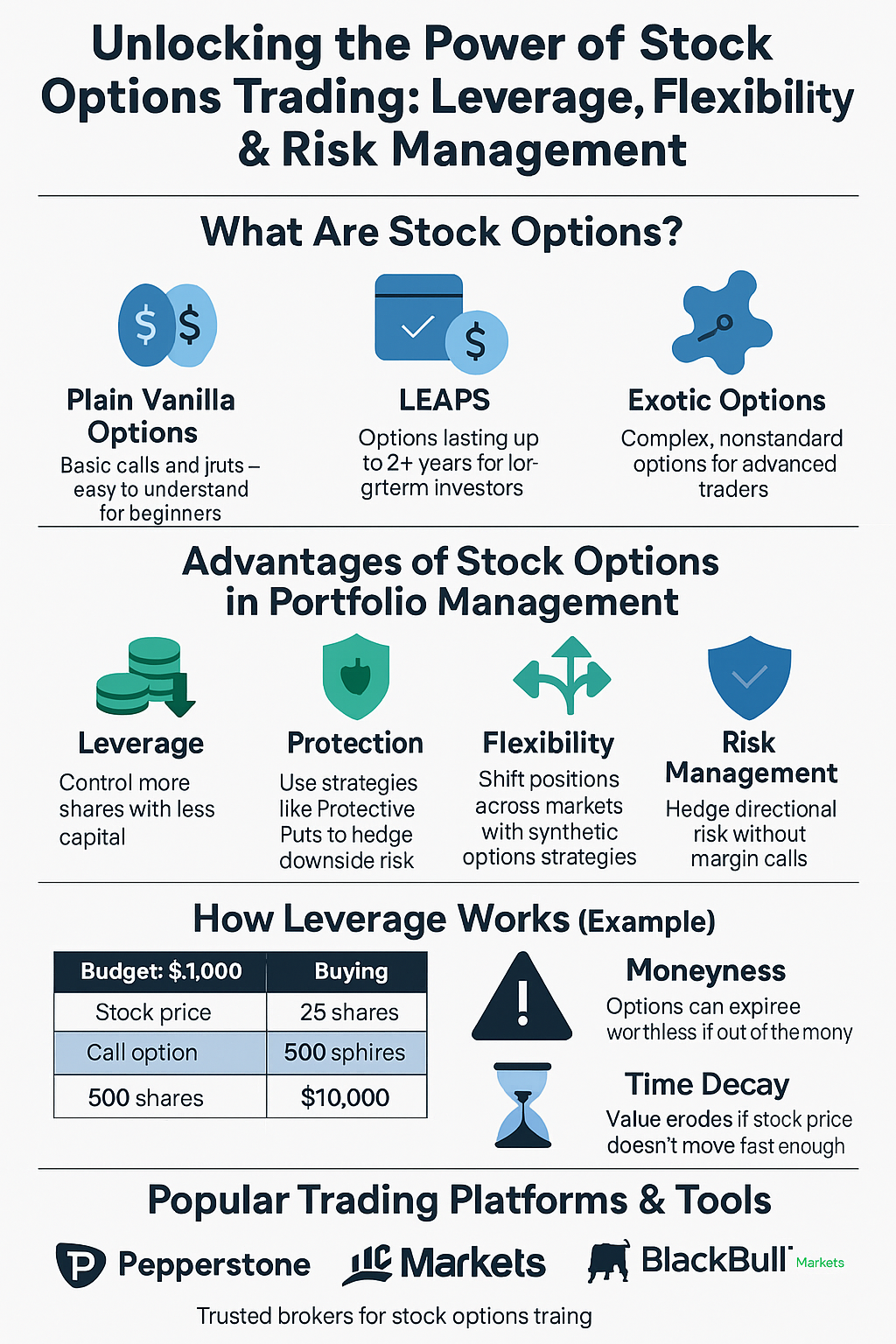
Hedging directional risk with stock options allows traders to protect their portfolios against adverse price movements while maintaining profit potential. Whether you’re holding stocks, ETFs, or futures, options provide flexible hedging strategies to limit downside exposure. Brokers like Pepperstone (with TradingView integration) offer the tools needed to execute these strategies efficiently.
Key Hedging Strategies
Protective Puts
Buy put options on stocks you own to limit downside risk. The put acts as insurance, increasing in value if the stock falls.
Covered Calls
Sell call options against long stock positions to generate income, offsetting potential losses while capping upside gains.
Collar Strategy
Combine protective puts and covered calls to create a “collar,” limiting both upside and downside risk for a neutral position.
Married Put
Purchase a put option simultaneously with buying the underlying stock, providing immediate downside protection.
Long Straddle/Strangle
Buy both a call and put (same strike for straddles, different strikes for strangles) to profit from volatility while hedging directional uncertainty.
Delta Hedging
Adjust option positions to neutralize directional exposure (delta = 0), useful for market makers and advanced traders.
Index Options for Portfolio Protection
Use SPX or NDX puts to hedge broad market risk, especially during economic uncertainty.
Vertical Spreads as Cost-Effective Hedges
Debit spreads (e.g., bull put spreads) can hedge at lower costs than outright options.
FAQs
What is the cheapest way to hedge a stock portfolio?
Covered calls or put spreads offer low-cost hedging compared to outright puts.
How do I hedge a long stock position without selling it?
Protective puts or collars allow you to keep the stock while limiting downside risk.
Can options hedging eliminate all risk?
No, but it significantly reduces exposure. Perfect hedges are expensive and often impractical.
What’s the best hedging strategy for a volatile market?
Long straddles/strangles or delta-neutral strategies work well in high volatility.
Which brokers support advanced options hedging?
Pepperstone, AvaTrade, and IC Markets provide robust platforms for options hedging strategies.
Final Thoughts
Hedging directional risk with options is essential for protecting capital while staying positioned for gains.
Strategies like protective puts, collars, and delta hedging help traders manage risk without sacrificing opportunity. For optimal execution, choose a reliable broker like Pepperstone (with TradingView for real-time analysis).
Alternatives like IC Markets and AvaTrade also offer strong options trading capabilities. Always balance cost and protection to maintain portfolio resilience.
Elias Stroud is a professional forex trader and market analyst with over eight years of experience. His journey began with the common misconception that trading was a get-rich-quick scheme, a path that led to significant early losses. It was this initial failure that forced a pivot towards disciplined, long-term learning and strategy development.
Today, Elias specializes in price action analysis, focusing on identifying high-probability setups without relying on complex indicators. He has cultivated a premium-level trading account, a direct result of his commitment to a structured and professional approach to the markets. Elias is passionate about sharing the actionable insights and foundational principles that helped him transform from a novice to a consistently profitable trader.
For further verification of his professional standing and live trading credentials, please visit the “About Us” page where account confirmation screenshots are provided, along with links to his trusted broker, Pepperstone, and his primary charting platform, TradingView.

